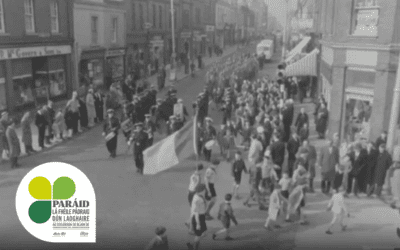TEMPORARY bathing prohibition notices that had been put in place at the Seapoint and the Forty Foot bathing areas by Dun Laoghaire Rathdown County Council last week were lifted on Thursday (June 27) as tests showed that these areas were now safe to swim in.

Cllr Ossian Smyth retweeted this picture from Flossie and the Beach Cleaners of water discolouration at Sandycove beach last week.
In a statement the council said the notices had been lifted, “following consultation with the HSE, as water sample results have come back showing clean water quality at these locations.”
However, tests at Sandycove Beach indicated elevated levels of E coli and enterococci and, at time of going to press, this necessitated the continued closure of the beach pending results of additional water tests.
The council suggested that the cause of these elevated levels at Sandycove Beach were most likely caused by the recent heavy rainfall on June 23/24 which resulted in waste water outflow.
“If the resample results for Sandycove Beach are acceptable the temporary bathing prohibition notice at this location will also be removed,” the council added.
“It should be noted that all other bathing areas in the council area, such as White Rock and Killiney Beach, continue to be open, safe for swimming and unaffected.”
Fianna Fáil’s Spokesperson on Dublin, John Lahart said it was “extremely disappointing” that pollution had occurred along several Dublin beaches for a second time this month.
“This would be bothersome for locals at any time of the year but the fact that it’s June means there is also the potential for a knock-on effect on tourism and the local economy,” he said.
“Swimming restrictions are already in place at Sandymount and Merrion Strand beaches for the remainder of the 2019 season as they failed to minimum water quality standards, according to the Environmental Protection Agency’s Bathing Water Quality in Ireland Report 2018.
He added: “Maintaining our local environment and keeping it clean and healthy is an absolute priority. There can be no shortages when it comes to public health and safety. Dubliners need assurances that this pollution will not have any serious, lasting consequences to their much-loved beaches.”
Early last week the council responded to reports on social media about orange water at Sandycove Beach and immediate surrounds.
The council said they had taken samples of the orange coloured water at Sandycove and the results indicated that it was that not raw sewerage but a micro-alga called Noctiluca scintillans that had caused the discolouration
“This is a benign, non-toxic, species – the ‘blooms’ are characteristically yellow, orange or orange/red,” the council clarified. “The appearance of this algal bloom is not directly associated with the waste water overflows asso-ciated with the temporary bathing prohibition.
“We have been advised that this is a natural summer phenomenon in response to long day length, high nutrients and warm water. These blooms have been reported along the east coast for the past few weeks and are typical for this time of the year.”
The council added: “The algal bloom exhibits bioluminescence, blue sparkles of light emitted when disturbed by waves on the shore or in the wake of a boat, hence the name Noctiluca, or Night Light.”
Cllr Ossian Smyth had retweeted a picture of the water at Sandycove Beach last week.
Story via  Full story here
Full story here





